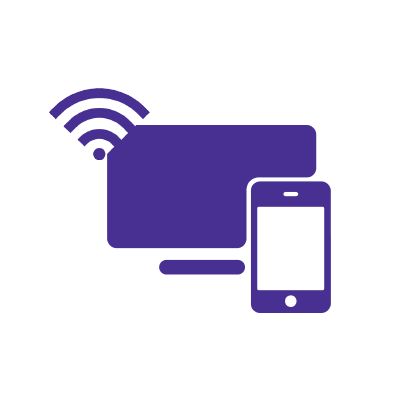How to secure your mobile phone from hackers

Cyberattacks on cell phones continue to increase in frequency and sophistication. According to Check Point, four out of every ten mobile phones worldwide are vulnerable to cyberattacks through mobile malware, which is often disguised as apps that look legitimate on the surface and even appear in official app stores.
This article will explore some of the existing mobile threats and practical approaches to protect your mobile phone from potential attacks.
What is phone security?
Phone security, or “mobile security,” refers to the precautions taken to protect sensitive data stored on and transferred by mobile devices from dangers and vulnerabilities.
This sensitive data includes user’s personal information, network login information and finances. Cell phone security comprises an array of technologies, regulations, policies and best practices.
Video tutorial: Ask the Expert: Tactics hackers use to attack your phone and how to avoid them.
What are mobile security threats?
According to the device tracking software company Prey Project, a mobile security threat is a cyberattack targeting mobile devices like cell phones and tablets.
A mobile security threat exploits the flaws in mobile software, hardware and network connections to perform malicious and illegal actions on the device.
Hackers can target mobile phones on multiple levels.
- The threats can include potential network-level attacks, malicious applications and exploiting device and mobile OS flaws.
- Malicious programs can be developed and released as software, which users may unknowingly download and install on their devices.
- Cyberattacks can use network connectivity to steal information or distribute malicious content, while both the iOS and Android operating systems feature exploitable flaws that can be utilized by humans or malware to jailbreak/root devices.
- OS defects grant an attacker advanced permissions on the device, breaching its security mechanism.
Types of mobile security threats
Mobile security threats come in many different ways.
Organizations need to take precautions against the following four types of mobile security threats:
1. Malicious applications
Application-based threats occur when users download apps that appear to be trustworthy but instead steal their device’s data. Examples include spyware and malware that secretly steals business and personal information from users.
For example, when a user downloads apps from the app store, they are usually asked to provide permission to access files or folders on the device during the installation process.
Unfortunately, most consumers agree without thoroughly reviewing the list of permissions, which can put them at risk of cyberattacks.
Spyware surveys or gathers data and is most typically installed on a mobile device when users click on a malicious advertisement or via scams that mislead users into unknowingly downloading the spyware.
2. Web-based threats
Web-based security threats are flaws or attacks that target mobile browsers or web-based applications.
Cybercriminals can deliver such threats via various methods, including phishing, malware, cross-site scripting, drive-by downloads and man-in-the middle-attacks.
They aim to steal sensitive information, compromise device security or gain unauthorized control over user accounts.
Phishing is using email, to trick a target into divulging a password, clicking a link to download malware or confirming a transaction.
Identity theft, credit card fraud and ransomware attacks are all expected outcomes of successful phishing attacks.
In cross-site scripting, hackers exploit web pages by sending malicious code that is then run by a user’s browser to steal session cookies or other private data.
A drive-by download happens when a user visits a website that has been hacked and malware is downloaded automatically without the user’s consent or knowledge.
Lastly, man-in-the-middle hackers can steal confidential information, such as login passwords or financial data, by intercepting and altering traffic between a user’s phone and a web server.
3. Network threats
Mobile phones are generally linked to at least two or more networks such as cellular networks, WiFi, Bluetooth and GPS.
Hackers can utilize any of these points in the network to take control of a device or deceive the user into breaching a company’s network.
Public WiFi networks are generally less secure than private networks because it’s often impossible to determine who configured the network, whether it’s encrypted or who is actively accessing or monitoring it.
One type of mobile security threat specific to public WiFi is network spoofing, a threat where an attacker pretends to be an open WiFi network to lure users into connecting and collecting valuable information the network is processing.
Cybercriminals demand that users create “accounts” with passwords to access these free WiFi services.
Because many users use the same email and password for multiple websites so hackers can then breach the user’s other online accounts to gain emails, passwords and other sensitive information.
Another network threat is a Distributed Denial of Service (DDoS) attack where the hacker tries to interrupt regular traffic to a specific server, service or network by flooding the target or its surrounding infrastructure with internet traffic.
This results in the network being overwhelmed by requests, preventing it from working correctly.
4. Physical threats
Physical threats are security hazards that can result from the physical loss or theft of a mobile device.
Phones are small, portable and easily stolen, exposing sensitive data saved on the device or in connected accounts.
There are several ways to steal a mobile device from its owner, including pickpocketing, mugging and burglary. Also, a mobile device can be misplaced or forgotten by its owner.
If the phone isn’t password-protected, anyone who discovers it can access sensitive data such as contact information, financial data and passwords.
Hackers who gain physical access to a mobile device can also tamper with it.
They can install malicious applications, change the device’s software or configuration, or extract private information.
Physical harm to mobile devices, such as falls or water damage, can also breach mobile security.
Physical damages can lead to data loss or the inability to access critical data saved on the device.
See how much you can save
Save with Astound
Check out our savings calculator to see the change in your bill when you build a plan with Astound.

How to protect your cell phone from security threats and hackers
Now that you’ve learned some of the ways your mobile phone can be compromised, find out how you can protect yourself from becoming the next victim.
1. Avoid downloading malicious mobile apps
When downloading apps, stick to the official app stores and other reputable sources to avoid installing malware.
You should also carefully review the terms and conditions and the application’s permissions before installing the app.
2. Don’t open or download links from suspicious texts, emails or websites
Avoid clicking on links in unsolicited emails or texts, especially if they request personal details or require you to download attachments.
Before clicking on any links, double-check the legitimacy of the sender and the link.
3. Use public WiFi cautiously
Do not access sensitive data like financial transactions, emails or passwords via public WiFi networks. Always utilize a virtual private network (VPN) when using public WiFi for secure browsing.
A VPN hides your IP address and encrypts any data you transfer, making it harder for cybercriminals to intercept or decipher.
A VPN shields you from remote hacking by using the IP address of the VPN server you’re connected to instead of your device’s IP address.
4. Set up password protection
Use strong, difficult-to-guess passwords on your phone and update them frequently.
Also, never use the same password for several accounts.
Most smartphones now include biometric authentication technologies such as facial recognition or fingerprint scanning, providing a simple and secure way to access your device.
5. Update your mobile phone to the latest operating system
It’s important to keep your phone’s operating system up to date by downloading regular updates, which include crucial security patches and changes that address security flaws.
Enable automatic updates or check for updates regularly.
6. Set up parental controls
If you have children who use your phone you should set up parental controls to prevent them from accessing inappropriate information or applications.
Parental controls can also prevent children from accidentally modifying or deleting sensitive files saved on your phone.
Most cell phones include built-in parental control features that allow you to set age-appropriate content filters, time limitations and other restrictions.
7. Back-up your data
Regularly backing up your phone’s data is critical in case your phone is lost, stolen or damaged.
Save your contacts, documents, photos and other sensitive data to cloud-based storage services, external hard drives or your personal computer.
8. Set up Find My Device
Mobile operating systems have an application that can help you find your phone if you misplace it, or lock, or erase it if you suspect it has been stolen.
To turn on Find My Device on an iPhone, follow the steps below:
- Go to the Settings app.
- Select your name, then tap Find My.
- Turn on Share My Location if you want your friends and family to know where you are.
- Next, tap Find My iPhone, then turn on the Find My iPhone toggle.
- Turn on Find My Network to view your device while it is offline.
- Finally, turn on Send Last Location to notify Apple of your device’s location when the battery is low.
To turn on Find My Device on your Android phone, follow the steps below:
- First, ensure you are signed in to your Google account.
- Ensure the Location is turned on.
- Navigate to the Settings app.
- In the settings app, select Security.
- Tap on the Find My Device option.
- Toggle the Find My Device switch.
- Open a web browser on your desktop or laptop after you’ve activated the Find My Device option and navigate to www.google.com/android/find website to see your phone listed.
Mobile + Internet + TV
Switch to Astound
Get Astound Mobile, Internet and TV—and save on the best services available.

Related content
Get Mobile + Internet Together
Find the mobile service, home internet and streaming that’s just right for you.
Astound Mobile requires Astound Internet service. Coverage not available in all areas. A trademark of Ziff Davis, LLC. Used under license. Reprinted with permission. Where available. © 2024 Ziff Davis, LLC. All Rights Reserved. All names, logos, images and service marks are property of their respective owners. ©2025 Radiate Hold Co., LLC d/b/a Astound Broadband. All rights reserved.
This website contains instructional information, including from third-party sources, and is intended, but cannot be guaranteed, to be always up-to-date, complete and accurate. Astound does not endorse, and is not responsible for, any third-party content that may be accessed through this website. Any representation or warranty by Astound that might be otherwise implied by information on this website is expressly disclaimed. Astound expressly disclaims all liability or responsibility with respect to actions taken or not taken based on any or all of the instructional information contained on this website. Astound does not warrant or guarantee the availability of any services at any specific time or geographic location or that services will be provided without interruption. Not all aspects of the Astound services function on all equipment and devices. Use of this website is subject to the Web Site Disclaimer and Web Content Accessibility Policy.
















